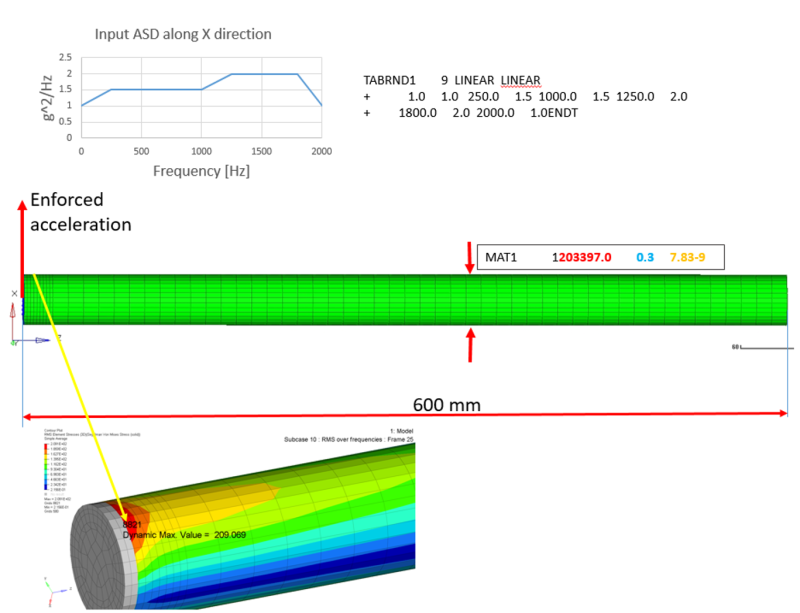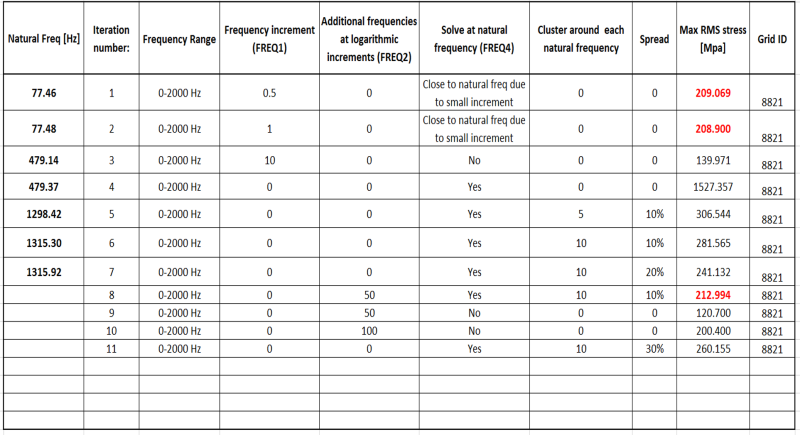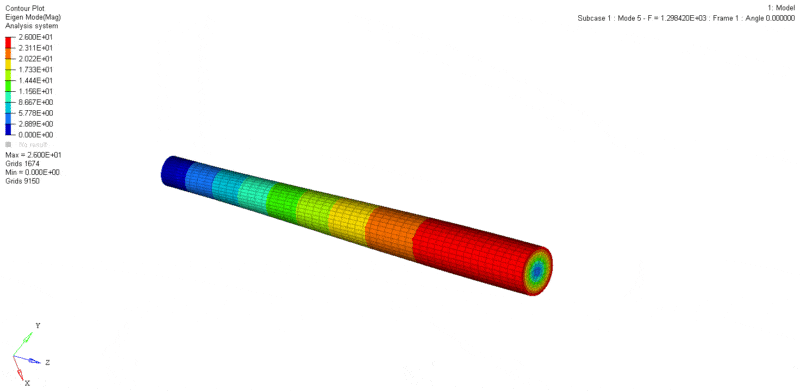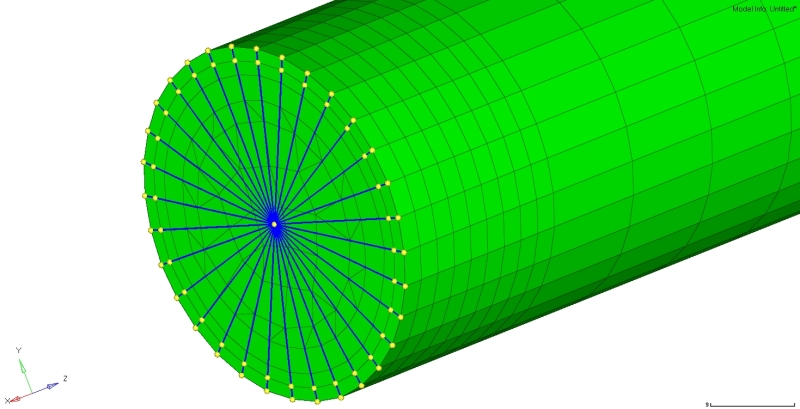NastranQ
Automotive
- Sep 3, 2007
- 19
Hello,
This may be a basic question, but I found no obvious answer on the web or the Nastran Dynamic analysis User's guide.
As stated in the Nastran Dynamic analysis user's guide the Random analysis is treated as a data reduction procedure that is applied to the results of a frequency response analysis.
Is there a rule of thumb for selecting the frequency increments for the preceding frequency response analysis?
Let's say I have a structure that has 20 natural frequencies in the 0-1000 Hz range for which I need to perform base excitation using PSD input.
Is it enough to select the natural frequencies? Do we also need to add the input PSD break points? Any other ?
I noticed that the results are sensitive to what frequency increments are selected for solutioning..
Any reply is very appreciated.
Any thoughts?
This may be a basic question, but I found no obvious answer on the web or the Nastran Dynamic analysis User's guide.
As stated in the Nastran Dynamic analysis user's guide the Random analysis is treated as a data reduction procedure that is applied to the results of a frequency response analysis.
Is there a rule of thumb for selecting the frequency increments for the preceding frequency response analysis?
Let's say I have a structure that has 20 natural frequencies in the 0-1000 Hz range for which I need to perform base excitation using PSD input.
Is it enough to select the natural frequencies? Do we also need to add the input PSD break points? Any other ?
I noticed that the results are sensitive to what frequency increments are selected for solutioning..
Any reply is very appreciated.
Any thoughts?




